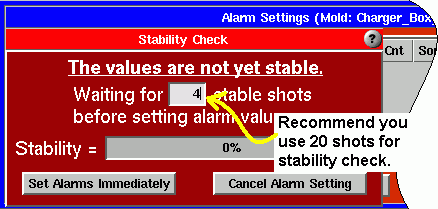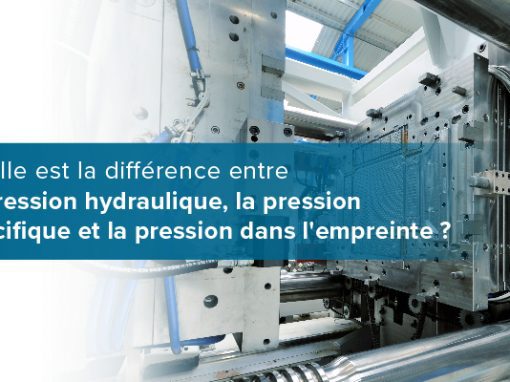Tip of the Day 133: Alarm Stability Dialog and « N » Shots
Part 1: Recommended Number of Shots for Stability
Release 8.8 of the eDART™’s Alarm Settings tool turns on the feature that checks for stability before selecting alarm levels. However the number of shots over which it checks is set to 4 as the default (since Release 8.1). This is the same number as the number of shots in the « Set Suggested Levels » dialog.

Checking stability or setting suggested levels over only 4 shots does not make much sense. We recommend that you use 20 shots. This provides the Alarm Settings tool with enough data to make a better judgment.
Part 2: What the Stability Check Is, Why and How to Use It
Tip # 77 explains how the initial alarm levels that the eDART puts in are based on standard deviation over a number of shots. This means that it assumes that this is a « normal » process and it makes a good guess based on the normal variation it sees.
We found that customers often set alarms after a very few shots after startup. The process would not be stable and the variation would look huge to the eDART. So it would pick wild alarm levels that made no sense at all. The stability check prevents that.
When you add an alarm (or a group of them) the stability checker watches all of them to see if the variation is random or not. Non-random variation includes trends, cycles, spikes, drop-outs or steps. If any of these things have been happening during the number of shots selected (the 20 recommended above) then the stability will be low. As the process becomes stable the number climbs. When it reaches 97% (for the least stable alarm selected) the eDART computes the alarm levels and fills them in for the new alarms.
You can see that there is a button that lets you set the alarms even if the process is not stable. If you do this at a very low stability number the alarm levels will be very wide relative to a normal process. Some processes may not quite reach 97% stability. In those cases, if you see the stability number level off at some slightly lower level you could click « Set Alarms Immediately » to carry on.
If the stability number refuses to rise then something is happening in the process. Put the values in question on the Summary Graph and look for the causes. For example a cyclic hot runner control (un-tuned PID loop) can cause an oscillation in the values. If you consider this normal you can set the alarms anyway. Better, get the problem fixed first.
If you wish to watch the whole process of setting an alarm with stabilization there is a 5 minute video here (the start controls are at the bottom of the image).
[youtube=3Z3zy0HLqC0]
Not much fast action drama but you can slide forward to speed it up. This shows the addition of a « Minimum / Temp @ Mid Cavity #In » value to the alarm settings and how the stability number rises until the alarm gets set with reasonable high and low levels.

